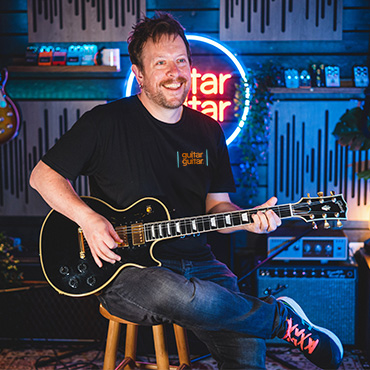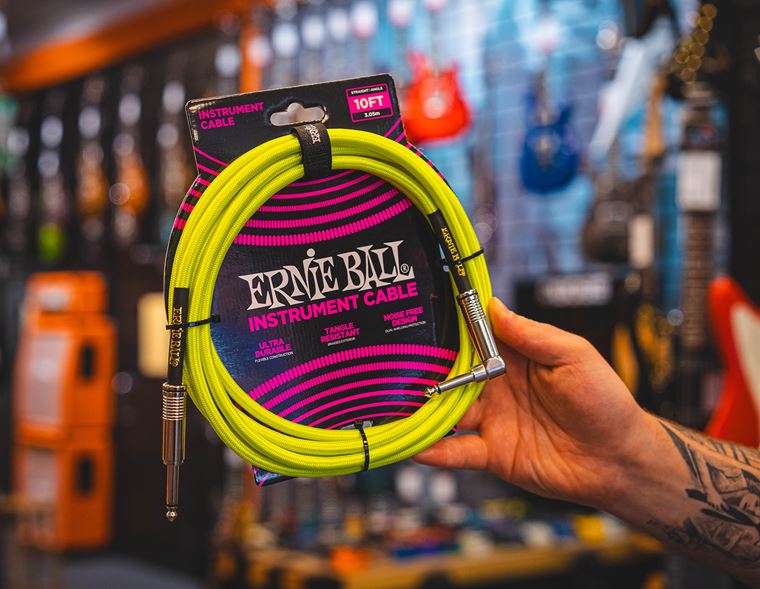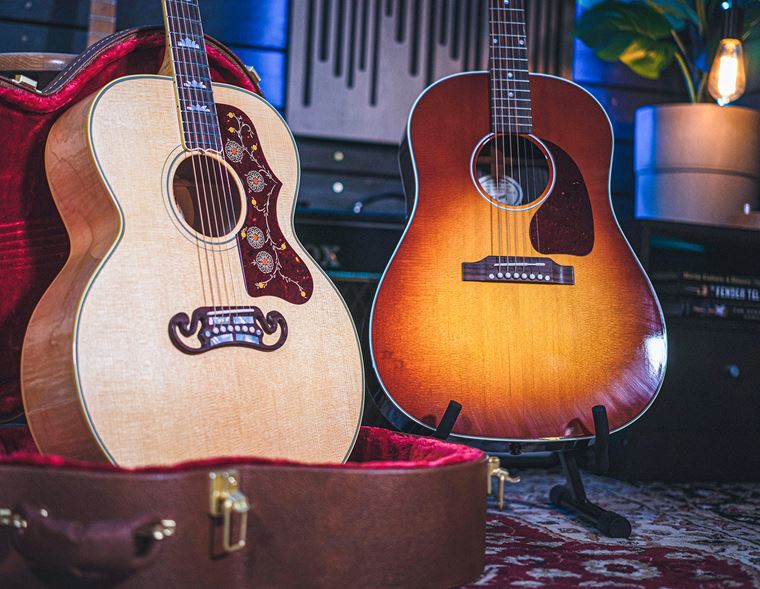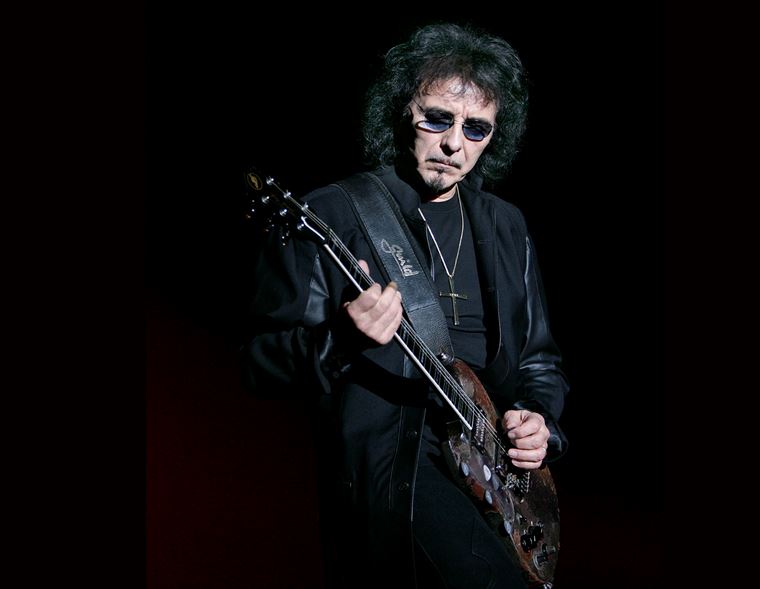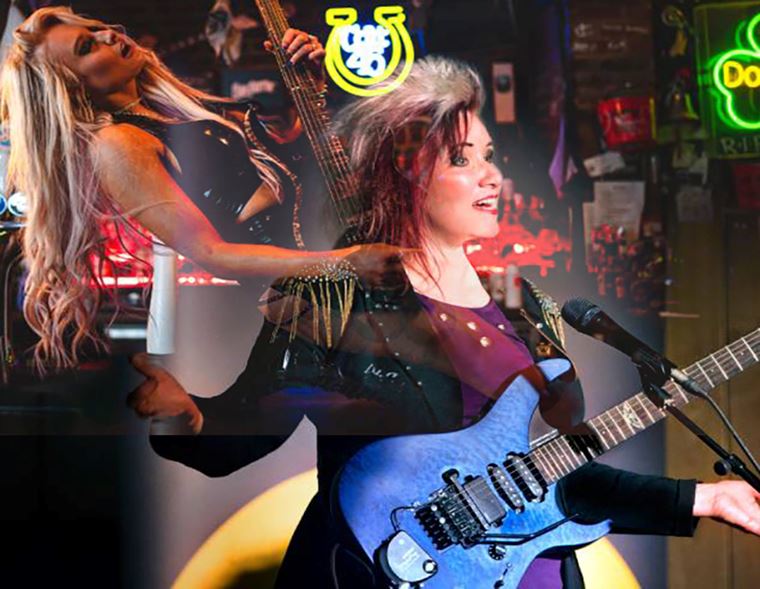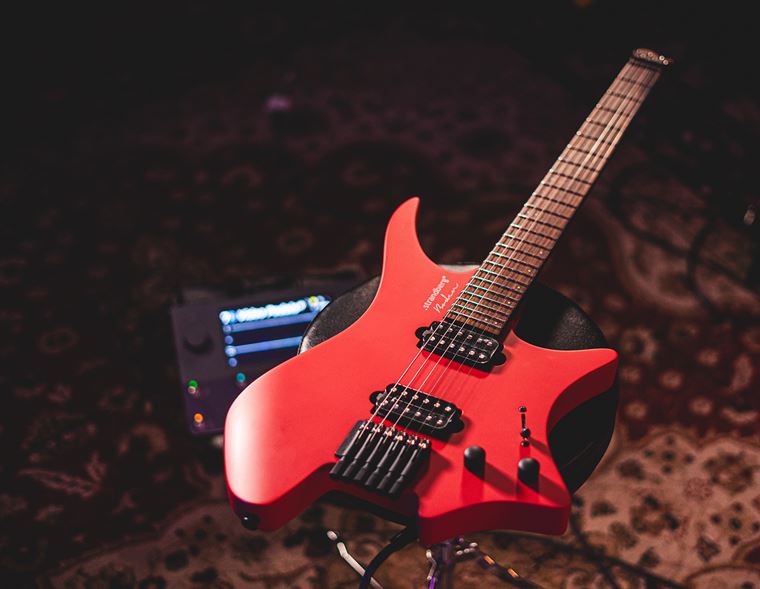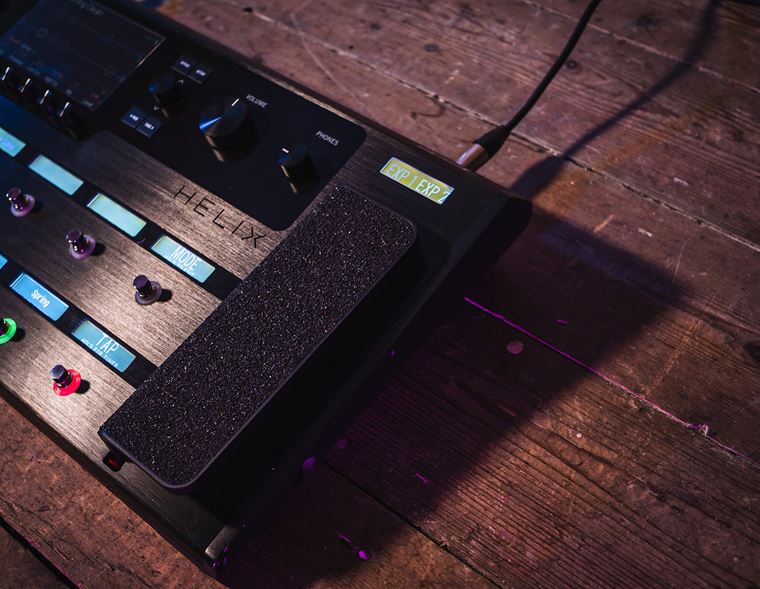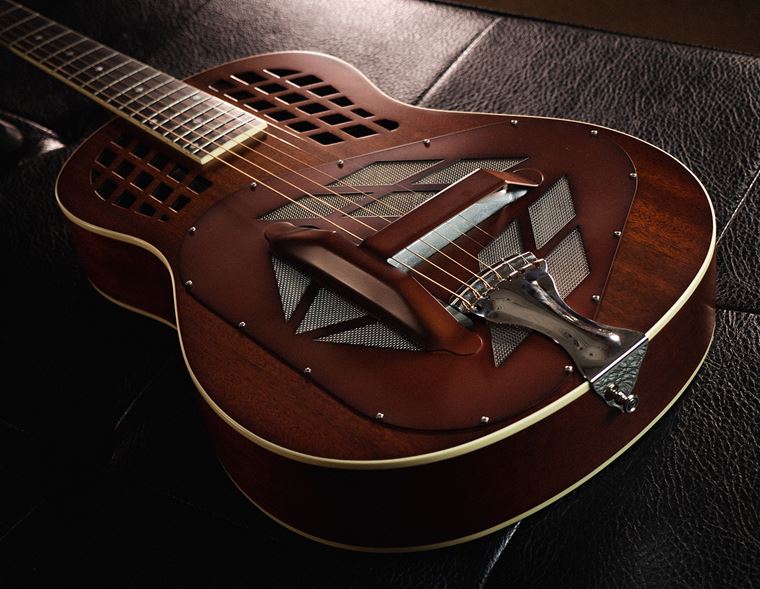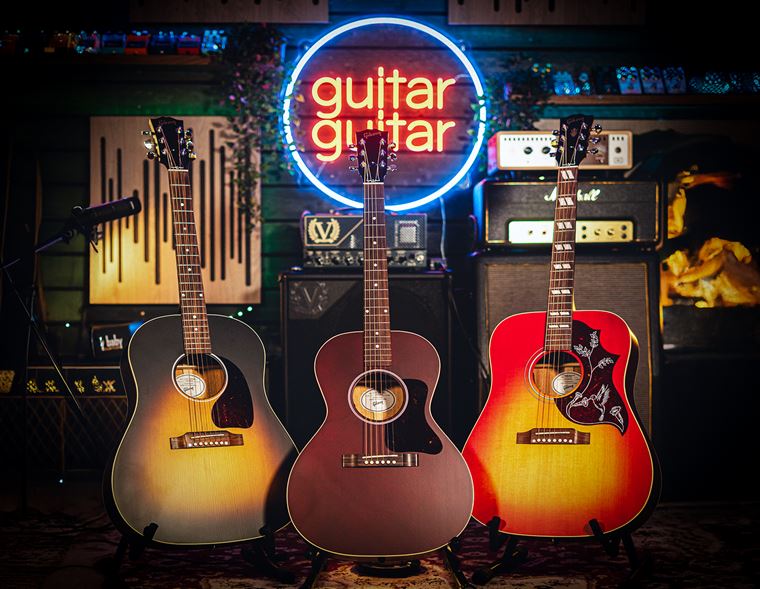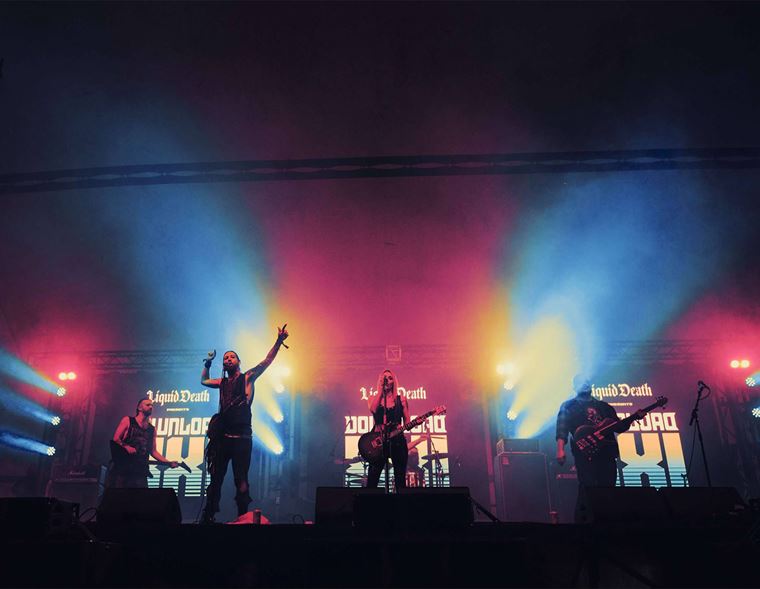MUSE: How to Sound AND Play Like MATT BELLAMY!
Muse are easily one of the most unique rock bands out there. For over 25 years now, the Teignmouth trio have brought far-off starscapes and avant-garde neo classical riffing into view of us mere mortals, all wrapped up in songs that veer from sledgehammer heaviness to crowd-pleasinging singalong charm. Amazingly, they achieved both of these extremes (and a lot more besides) without alienating any part of their fanbase.
Muse are an instantly recognisable band, from singer/vocalist Matt Bellamy’s voice to his game-changing guitar work. He’s one of the few rock players operating on a massive global level who are actively pushing the form forward, and he deserves both respect for that, and a deeper look.
That’s what I intend to do today with this guide. I’ll check out Bellamy’s guitar gear, talk about how it is incorporated into his music, and then I’ll suggest a few ways in which you can make your own playing a little more adventurous and ‘Muse-like’.
As well as that, there's an exclusive interview with Adrian Ashton, CEO and co-owner of Manson Guitarworks, the company who build Matt's custom guitars!!
Are you ready for some Black Holes and Revelations?
Contents
Matt’s Guitars
- Manson Guitarworks are the makers of choice
- Exclusive interview with Adrian Ashton about Matt and his guitars
Manson
Manson Guitarworks are a custom builder located down in Devon. They’ve been Matt’s sole choice for guitars since he was in a position to commission his own custom guitars.
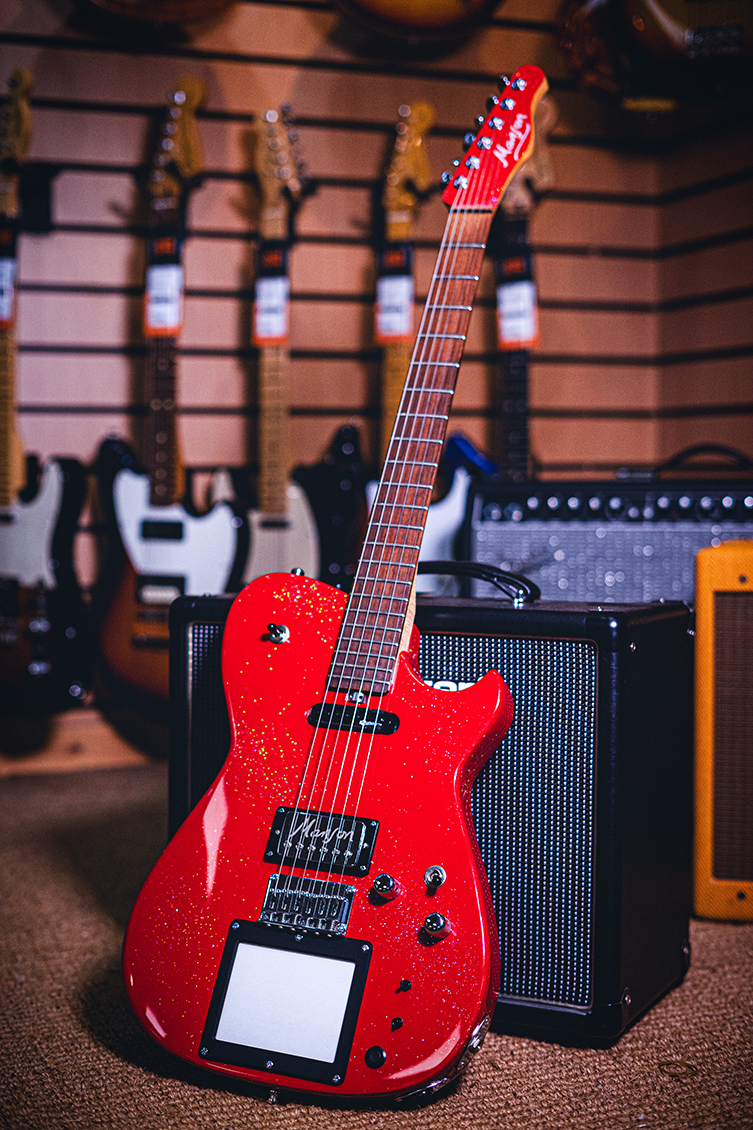
As all Muse fans know, Bellamy not only has close ties to Manson guitars as a patron, but in recent years as an owner! It’s a very interesting position for him to be in, given his and Manson’s rich history together. We stock Manson’s great Meta Series guitars, as I’ll cover with you soon, but all of the wilder custom stuff is direct from the workshop.
I’ve always been intrigued about Manson guitars and Matt’s relationship to them, so I did what I do and reached out to them directly! Manson Guitarworks’ CEO Adrian Ashton was happy to chat to me via email about the backstory of Muse’s dealings with Manson, and about how things developed. Here’s a short but info-packed interview with Adrian…
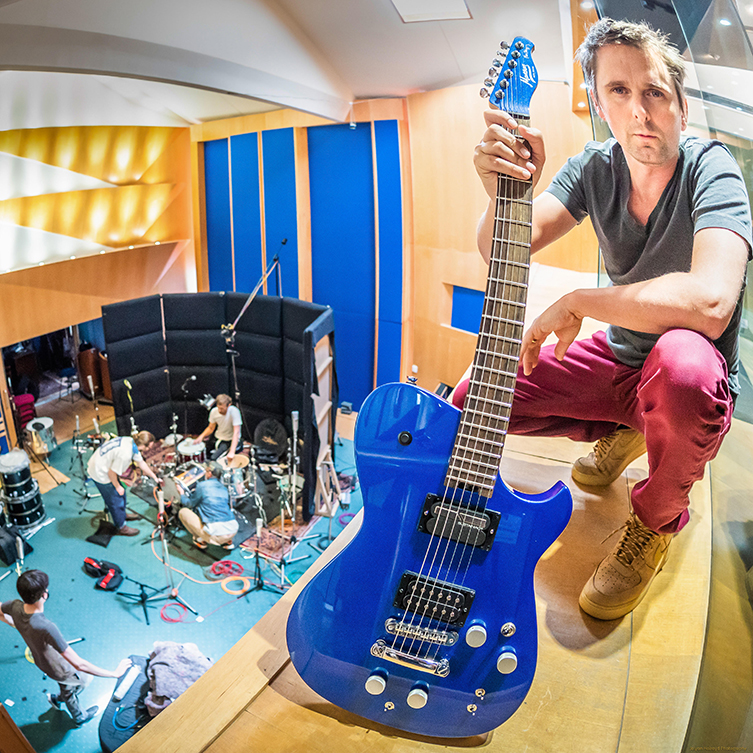
Adrian Ashton Interview
How did Matt first become involved with Manson guitars?
Before Matt, Chris and Dom were even performing under the name Muse, they had heard of a small cramped shop in Exeter where Hugh Manson, Jay Henson and Adrian Ashton specialised in repairs, modifications and specialist sales of guitars and basses. I have some wonderful early receipts of Matt and Chris just buying the sort of things that we can probably all recall as we started out in bands but had very little money! Budget amps, cheap second guitars, that sort of thing.
Lovely guys, we'd heard that they were worth going to see live, although we are talking very early days: 20-30 people, local Battle of the Bands and so on.
Matt and Chris would come to have guitars and basses set-up and restrung, and were always keen on any kind of effects pedal. Matt slowly upgraded his guitars. His first rig was a Carlsbro PA head and a Yamaha YSG guitar - which we still have in our possession - and that soon became an Ibanez 420SC and a Marshall head.
When the band started getting early label/management interest, it was fascinating to see the band very confident about their work ethic and the music they were producing, yet without ever coming across as arrogant in any way. We took a liking to them as individuals and as customers, even though they weren’t spending big sums back then.
Matt walked in the shop one day and told Hugh that if they became signed, the first thing he would order would be a custom guitar. Not only was he good to his word, I think that first custom must rank as one of the most iconic artist/luthier guitars created: the DeLorean, as it quickly got named owing to its aluminium finish. It’s on a similar level to the association of Bootsy Collins and his Star Bass, or Prince’s Cloud guitar. The artist and the instrument are just intrinsically linked.
The relationship just continued from that point onwards.
Did Matt collaborate on guitar ideas (such as the built-in KAOSS Pad) and was anything attempted but impossible to realise?
It is a two-way relationship. Matt would come up with lots of crazy ideas, then Hugh, Ron Joyce and now head luthier Tim Stark would have to create an instrument that not only showcased the visual ideas, it had to be utterly road worthy for long and often very hectic tour duties. It’s an ethos we still continue to this day. There are so many artistic guitars out there that get great ‘insta’ likes but can’t actually perform all the duties a rock ‘n’ roll guitar needs to carry out, time and time again.
In other instances, Hugh or Tim would present Matt with an idea first. Some got rejected but others were excitedly accepted. Hugh’s original ‘Holey Guitar’ idea and Tim’s ‘Geo Mask’ guitar are great examples of Manson ideas to produce something for an artist that has exacting tastes!
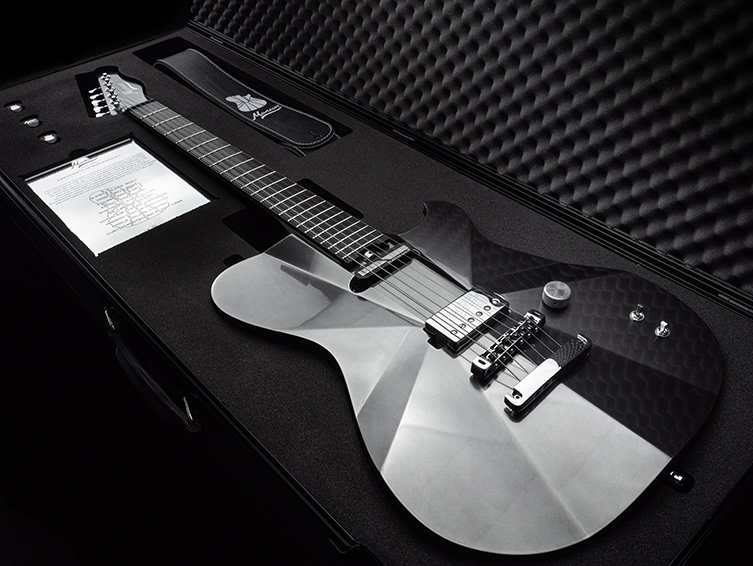
We have never shied from any challenge but the flying guitar (yes, really) was an idea too far for us. Much of its abandonment surrounded the difficulties of fulfilling the two previous essential Manson criteria - stunning looks and still able to work fully as a functioning guitar - plus the health and safety aspect of getting enough lift whilst being aware of potentially lethal rotating blades! Ultimately it proved to be a little too ambitious, especially with a tour deadline in sight. We have the drawings still, maybe time to revisit?!
Definitely! Finally, what is Matt’s role within Manson today? How involved is he?
I do get asked this a lot! Matt is constantly involved in every aspect of the business, from product ranges, branding, licensing, company strategy and development. He is more involved than some company directors that don’t already have another job as a world-class musician, songwriter and performer!
It is just how we would all want it here. It’s a great way to have a majority owner/director involved: always participating but leaving myself and the team to everyday tasks and to run the company and take care of general business. He really has put everything into the company, it’s not a financial only or marketing exercise. He is both the mainman and part of the team. Since Matt got involved we have also been fortunate enough to attract further talent in both the investment and strategy side: Meng Ru Kuok - owner of Mono, Heritage, Harmony, Bandlab and several MI products - is now also involved. Being surrounded by such talent, I have to be on my toes! It really is an exciting time for the company, we have lots of cool stuff for 2025 and beyond!
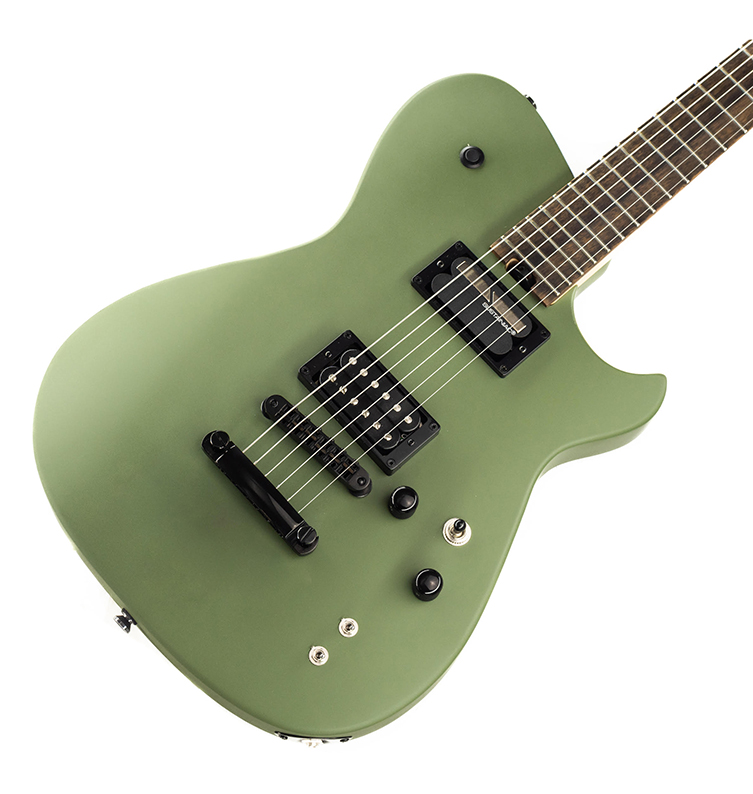
Manson Meta Series Guitars
Manson’s Meta series is a collaborative, licensed project with Cort guitars in Indonesia. Cort make guitars for a number of the world’s top brands, at prices that are easier to afford than custom builds.
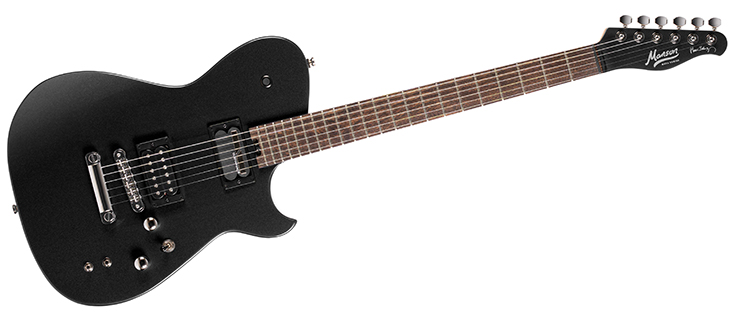
The Manson Meta MBM guitars are excellent affordable versions of Matt’s custom Mansons, featuring styling, specs and hardware that’s all been approved by the man himself. He has tested them and given them the green light, so you can assure that they’ll hold up well, tour after tour.
It’s worth saying that these are actually very subtle in regard to their ‘signature’ status. If you love the vibe of them but don’t want to be overtly fanboyish, these guitars will work for you. Some even come fitted with Sustainer pickups too!
Matt’s Amps
Matt has used a selection of amps over the years. There isn’t a particular amp model that’s required to get the Muse guitar sound, in my opinion. He generally likes high gain tube amp heads such as the Diezel VH4 and the Marshall JCM2000. These amps form the basis of that massive Muse crunch tone, though he seems partial to an AC30 too, which resolutely does not give out high gain metal tones!
He has actually used tons of different tamps over the years, so I’m going to say this: any distorted valve amp that’s rich in mids and compression will get you close. Digital modellers will be helpful here too! For years now, Bellamy has used a digital setup for his live guitar sound. He tends to use either a Kemper Profiler or a Fractal Axe-FX unit.
Effects
- Matt uses loads of effects, in the service of the song
- Having the exact gear is less important than understanding how he's using each effect
- Delay and whammy will get you a long way here!
Now, this area could end up pretty long! Matt’s well into using effects on his guitar. From digital delays to fully processed and sequenced quasi-synth parts (Map of the Problematique), his guitar is rarely ‘dry’.
Instead of listing every single pedal he’s ever plugged into, I figured it might be more helpful to single out some specific sounds from Muse songs and talk about the effects used on them. Sound good?
Digitech Whammy
Matt uses this a lot, most usually in the ‘Octave up’ settings. My favourite Whammy moment with Matt is the deliriously genius/mental guitar solo for Invincible. This part combines complex two-handed tapping with judicious use of the whammy to accent the melody.
You’ll be able to play this one after a bit of practice, but to think it up in the first place? That’s where the genius lies!
(Jump to 3m 22 for the whammy solo!)
One other great whammy moment (there’s a bunch) is the solo on the song Reapers from the Drones album. The whammy one again accents the main notes, adding drama and colour to an already cool part.
(Head to 2m 39 for the part in question!)
ZVex Fuzz Factory
It’s a very famous fuzz pedal nowadays, but back in 2001, it was definitely more niche! The Fuzz Factory is a deliberately erratic and unpredictable fuzz effect, and Bellamy used it to play the iconic intro to Plug in Baby.
He’s a bit of a fuzz connoisseur, isMatt, and has utilised the Keeley Fuzz Head, ProCo Rat, Electro-Harmonix Big Muff and loads more throughout his career. This one is the one people associate with him, though, not least because he used to have Manson build them into his guitars!
(Definitive Fuzz Factory noise right from the beginning!)
MXR Blue Box - Unnatural Selection
The MXR Blue Box has proven itself to be a ‘secret weapon’ for many unorthodox guitarists. From Ministry to NIN, every six-stringer who likes making some noise will inevitably end up with this pedal. So it is with Muse, and the song Unnatural Selection. It’s not mega-obvious to my ears that this is the effect (it’s a sub-octave fuzz with a mad sweep) but you can see the band fooling with the pedal in an online documentary for the Resistance album.
(The MXR Blue Box is all over the second half of this song!)
Accessories
This brief section is for strings and picks, the stuff that every player requires! Matt typically uses Ernie Ball 10-52 gauge strings, with the heavier bottom strings proving useful for drop tunings.
As for picks, he’s a Tortex Yellow man through and through! These are .73mm, which is otherwise known as medium. Given how precise much of his playing is, I initially expected a heavy gauge of plectrum. Thinking on it though, even somebody like Matt is mostly a rhythm player, and the .73mm gauge is perfect for that. There’s a little bit of movement and ‘give’ - it’s not too stiff - so it’s easier to fire out rhythms that have a bit of personality.
How to Play Like Matt Bellamy
Matt Bellamy is a pretty unique guitarist. Particularly in such a mainstream rock context, he definitely pushes in fresh new directions. He has created an immediately distinctive, recognisable style, and whilst you can’t really teach that to someone, there are still cool things we can learn!
Let me outline a few things I’ve noticed from his playing over the years. Try them out and see if they resonate with you in your music.
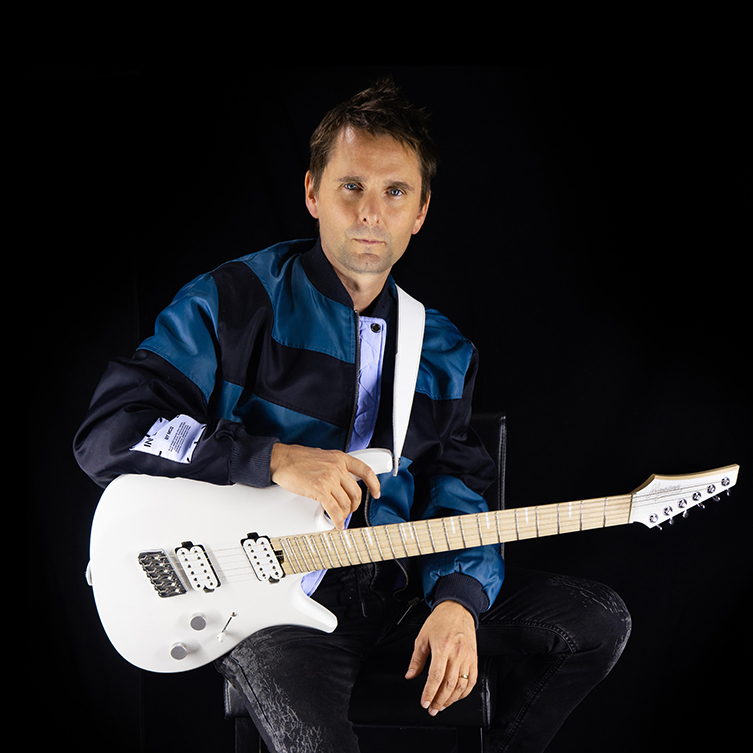
Arpeggio-based Soloing
Matt is not one to fire through the Blues scale when it's time for a solo. His love for classical music shines through in his use of arpeggio shapes, both across the strings and up & down the neck. A great example of this is the solo for Hysteria. The first part is deceptively tricky to play cleanly due to the string skipping, but it’s the melodic second half that applies here. Check out Matt’s almost chordal playing here, making melodies out of arpeggios that would work well on a violin.
(2m 47 for the example)
Pedal Tone Riffs
This is something that many of us do, maybe even unconsciously. A pedal tone is a note that you keep coming back to within a riff or part, almost like an ‘anchor’ for the rest of the notes. It’s often (not always) the lowest note and is usually also the root note of the song’s key.
Here’s an example. Assassin from Black Holes and Revelations sees Bellamy hammering the low D whenever he’s not playing the Bb note accents that make up the riff.
(0m37 for those pedal tone notes!)
The main riff to Hysteria is another perfect example. Every note in the main riff that isn’t fretted is an open E pedal tone. Have a listen above and you’ll see what I mean. For yet another great pedal tone riff, check out the dramatic middle section of The Globalist, around four and a half minutes in. Epic!
Tremolo Picking Leads
From early single Sunburn onwards, Bellamy has understood the inherent drama of tremolo picking. It’s actually one of his most often-used techniques for making a statement with guitar solos, with examples occurring throughout Muse’s discography.
Matt often couples this with whammy pedal activity, like the leads on New Born. However, it’s just as cool when he plays lower down the pitches, such as this excellent instrumental track Interlude from the Absolution album.
Go back to the Globalist - which we looked at a second ago - and you’ll find another excellent example of Matt’s tremolo-picking intensity.
Classical-style Chord Progressions
Bellamy uses a couple of ‘special moves’ in his songwriting to add an obvious classical quality to Muse’s sound. Here are two to check out:
Major V Chord in a Minor Key: Chords in a minor key generally have minor 5ths, but Muse often use the major fifth instead, which definitely sounds ‘classical’ to my ears. Try playing these chords in sequence: Am, Dm, C, E. Did you hear it? It should be Em there since we are in the key of Am, but changing it for the major adds a very cool lift to the whole piece.
Another one…
Semitone Melodic Resolutions: Matt has definitely listened to a lot of Mozart, because a number of Muse songs take advantage of what I call ‘semitone resolution’. In the song Blackout, the chords seem to be Bb, Bb/A, Gmb6 and Faug. The last two chords are the important ones here, because the 6th notes sit either side of the Bb resolution. These notes bring our ears in close, leading us in an unresolved manner until we go back to the Bb chord again. It’s a very ‘piano’ way of dealing with chords, and is most unusual on a guitar. It’s well worth practising!
These two tastes hint at Matt’s advanced chordal music theory, and his ability to make complex music sound pretty accessible to a mainstream audience.
Aim for Uniqueness
Matt Bellamy is a gifted musician who knows his theory, despite being self-taught. He knew how he wanted to sound as an artist and followed that desire until he could achieve it.
I reckon that’s the biggest take from this whole article, ironically: learn by example from Matt and cultivate your own voice. Copying is a good way to learn, but at some point you need to jump off and forge your own path, just as he did.
Read what Adrian from Manson Guitarworks had to say about Matt earlier in the blog: he was after a unique guitar as soon as he could realistically afford to order one. He didn’t idolise a guitar played by some previous rock legend.
His musical influences are as much from 1720s Vienna as they are from 1990s Los Angeles, but the music he is creating is all about the here and now.
He uses sounds and effects according to how he wants them to sound, not how others have utilised them in the past. You can hear influences (Jonny Greenwood, Tom Morello) but he never copies.
In short, he’s an original player. A unique artist who created a voice on the guitar that is undeniably his. That’s the real goal for us all, right? I think it’s helpful to learn some of Matt’s theoretical tricks on the guitar, because they’ll get your fingers away from the usual shapes, but the real gold is in remembering how original he actually is, and using that as your inspiration.
Good luck, and be bold!
Click to View our Manson Meta Guitars

